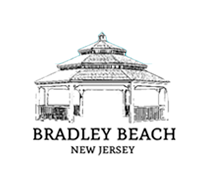To flush or not to flush….
The Department has received numerous calls over the years about sewers backing up in homes and businesses. This is meant to be a guideline to citizens about the role they play in preventing this occurrence. Raw Sewage is a source of illness and disease, and if not properly contained and treated sewage is a serious public health threat.
What is sewage?
Sewage is the used water and wastes discharged by a community. Sewage is collected from the drains of sinks, showers, toilets, laundry facilities, etc. Sewage comes from the drains in homes and businesses, into the sewer lines (or “collection system”), and is then transported to a sewage treatment facility.
What causes sewers to back up?
Sewer back ups are caused when the sewage collection lines get clogged. These clogs are often caused by fats or greases, paper, feminine sanitary pads or tampons, disposable diapers, or sanitary items such as tucks, cloth, wood or any other materials that get caught in the line and plug it up.
Why should I care if the sewer backs up?
Sewage back ups are very costly, messy, stinky, and pose a serious threat to the health and safety of people and animals. Infectious diseases can be transmitted from raw sewage resulting in serious illnesses or even death.
What CAN I flush down the toilet?
Only feces, urine, and toilet papers should be flushed down the toilet. Other drains should only be used to dispose of used water and soaps from washing or cleaning activities.
What CAN’T I flush down the toilet?
You cannot flush anything down the drain that could clog the sewer collection system or anything that could damage the sewage treatment facility. This includes:
- Flammable or explosive liquids, solids, or gases
- Fats, oils, or greases
- Big chunks of garbage, sand, metals, wood, straw or grass, wastepaper, plastics, animal parts, glass, cat litter (including so called “flushable” cat litter), disposable diapers, sanitary napkins, tampons (including tampon applicators), other bulky so called “disposable” products such as tucks or similar substances
- Corrosive substances that are either acidic or caustic
- Any substance that is toxic to the treatment facilities or workers in the facilities
- Dye wastes or tanning solutions
- Anything radioactive
- Materials from cesspools, privies sump pump, cellar drains, area drains, roof leaders, downspouts and/or any garbage or refuse disposal unit or any other system
Why can’t I flush these things down the drain?
The above types of materials can cause clogs in the sewer lines or damage to the collection system or treatment facility. They may also pose safety threats to citizens and sewage plant workers. Some of the prohibited substances are not readily removed in the sewage treatment process, and therefore pose a threat to water quality when discharged with the facilities efluent. (“Efluent” means the treated water from a sewage treatment facility that is discharges into a stream, river, or groundwater.)
Why should I care what happens to the sewage treatment facility?
A sewage treatment facility is usually publicly owned, which means we all pay for the associated costs. Proper sewage treatment is vital in protecting everyone from water borne diseases and protecting the environment from pollution. This important job is not cheap! We all pay for it! By following the above guidelines we all contribute to protecting our community’s investment and keeping costs as low as possible. Clogs in borough sewer lines from grease or other materials cost money to be cleared out. This cost is passed on to everyone in the form of higher user fees.
What happens if I don’t follow the guidelines on what, and what not, to flush?
Violations of the municipal code concerning prohibited materials in the sewage collection system could lead to prosecution and conviction.
